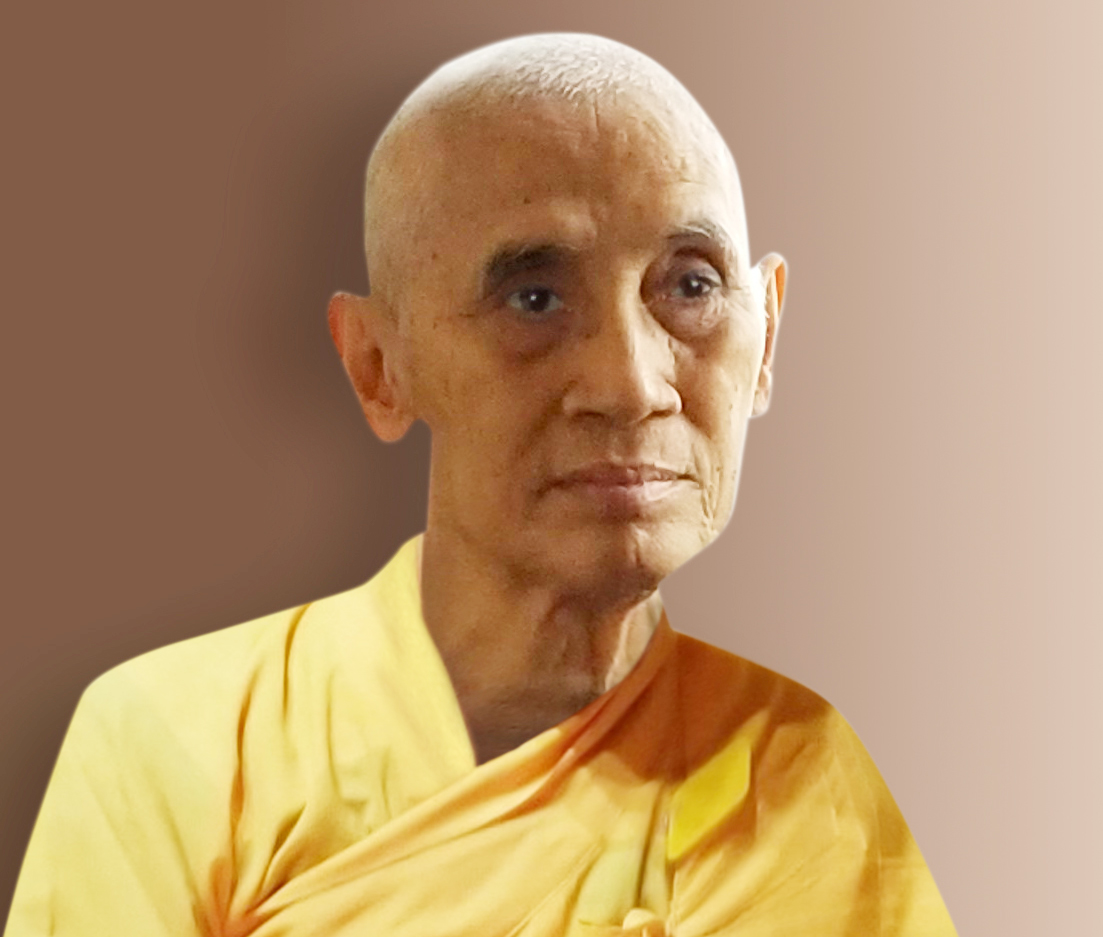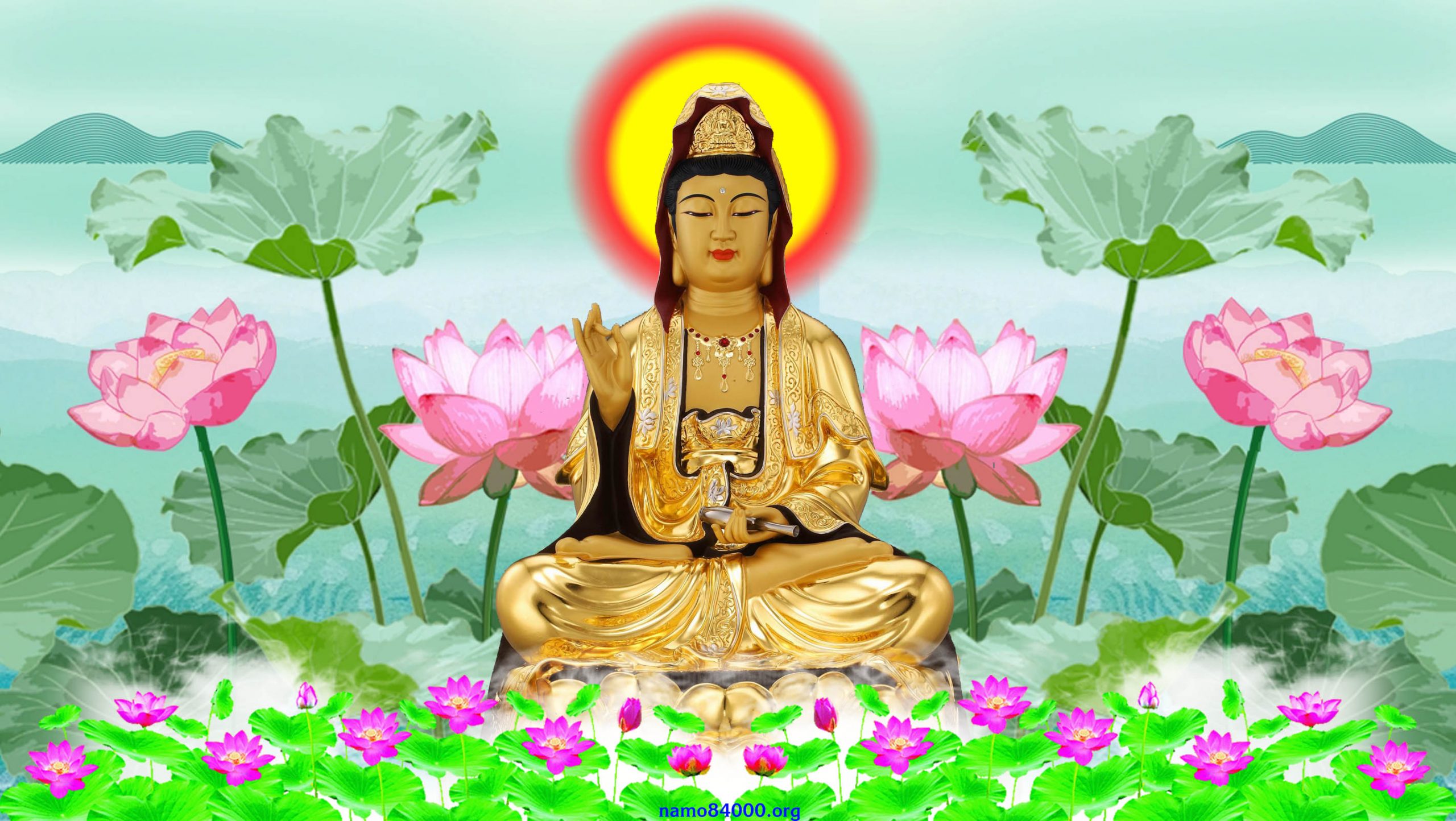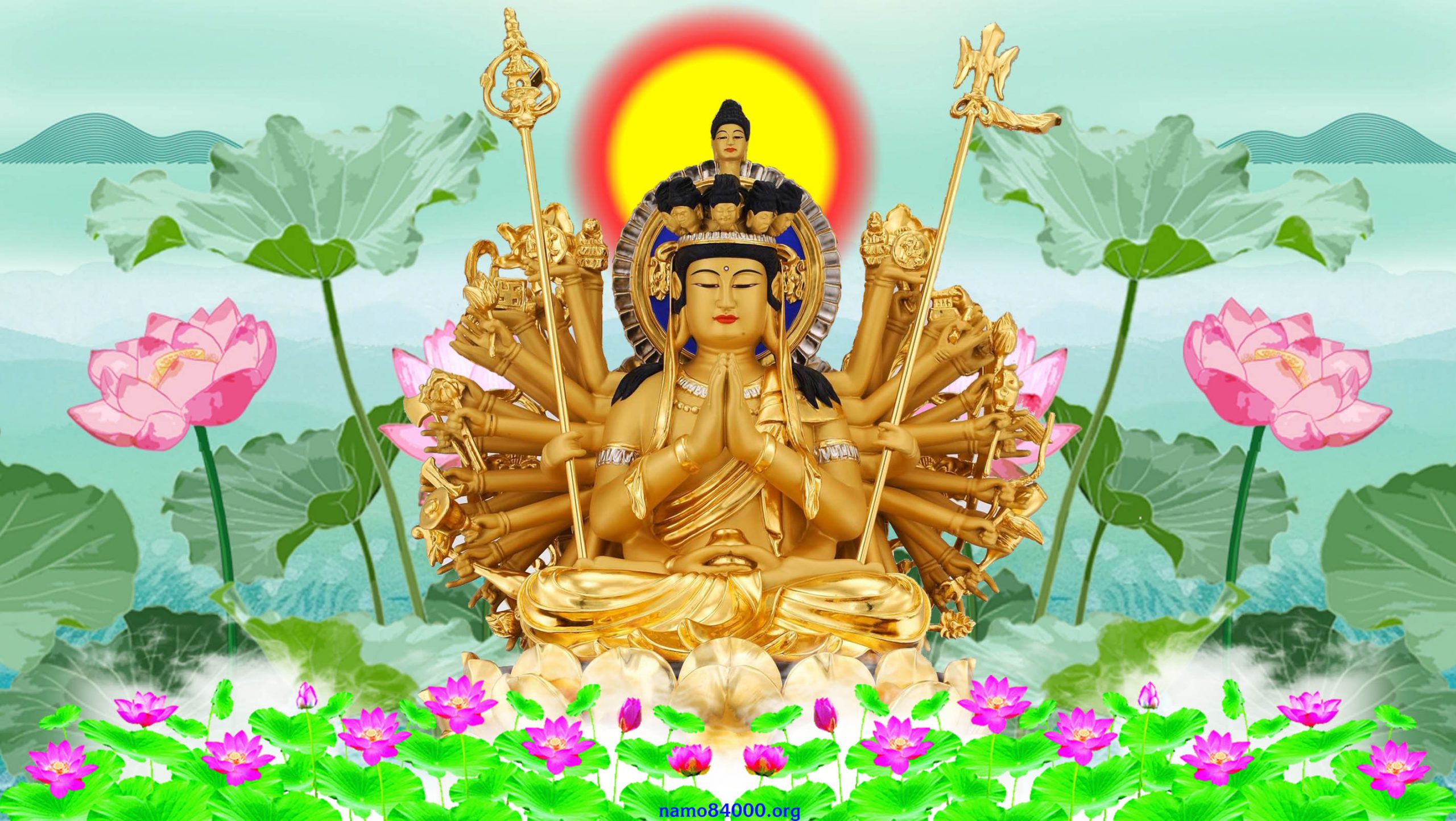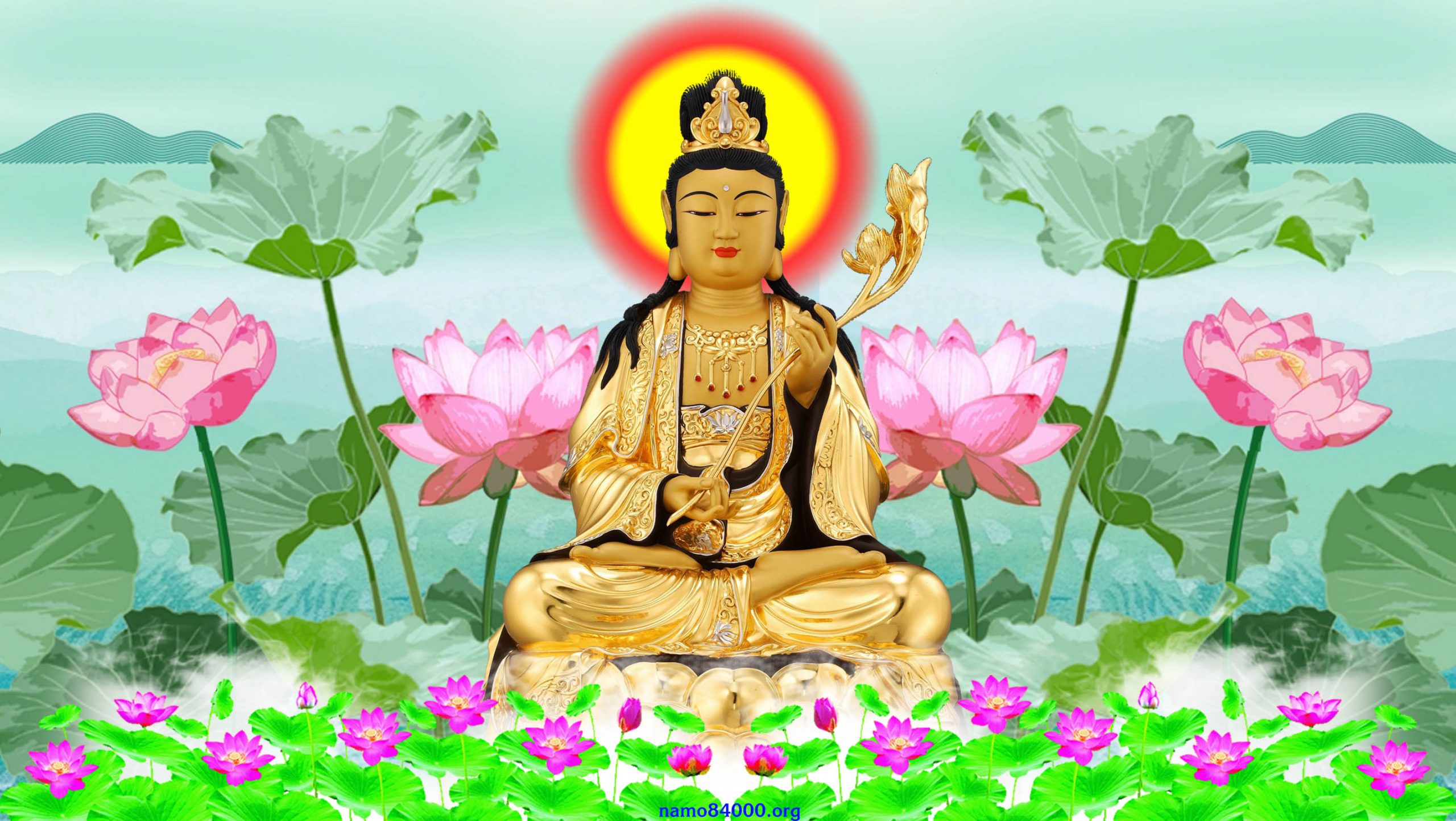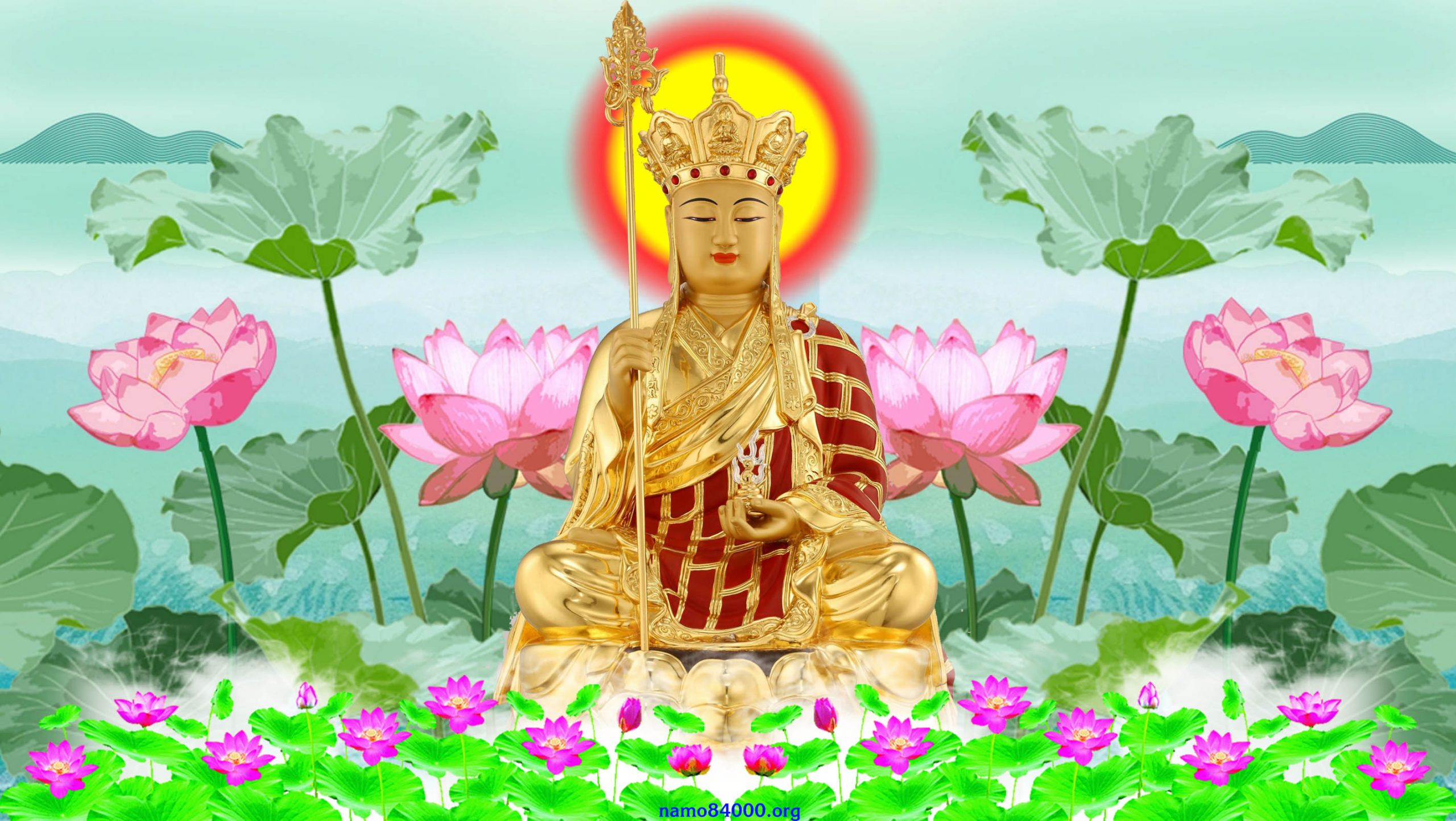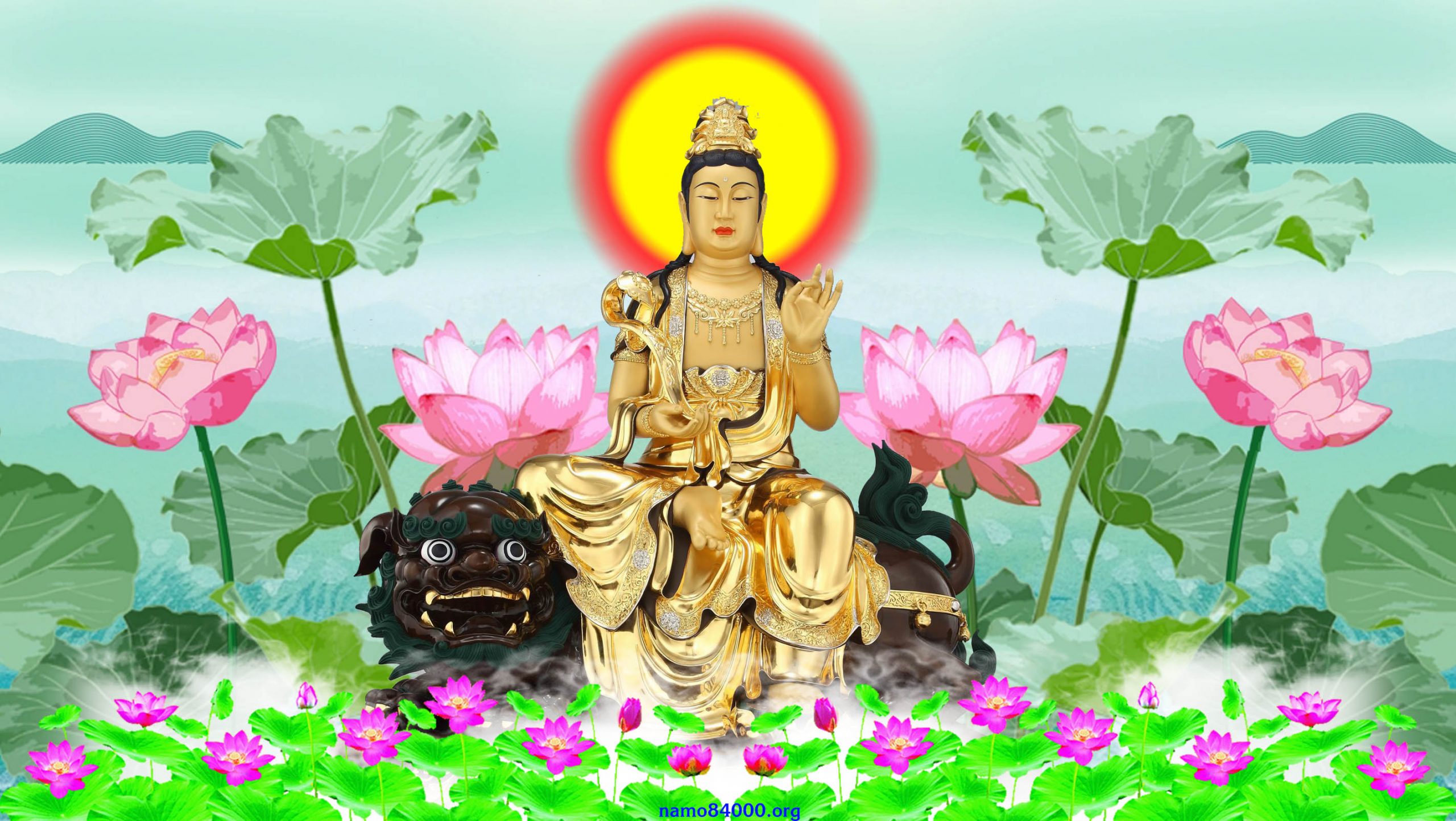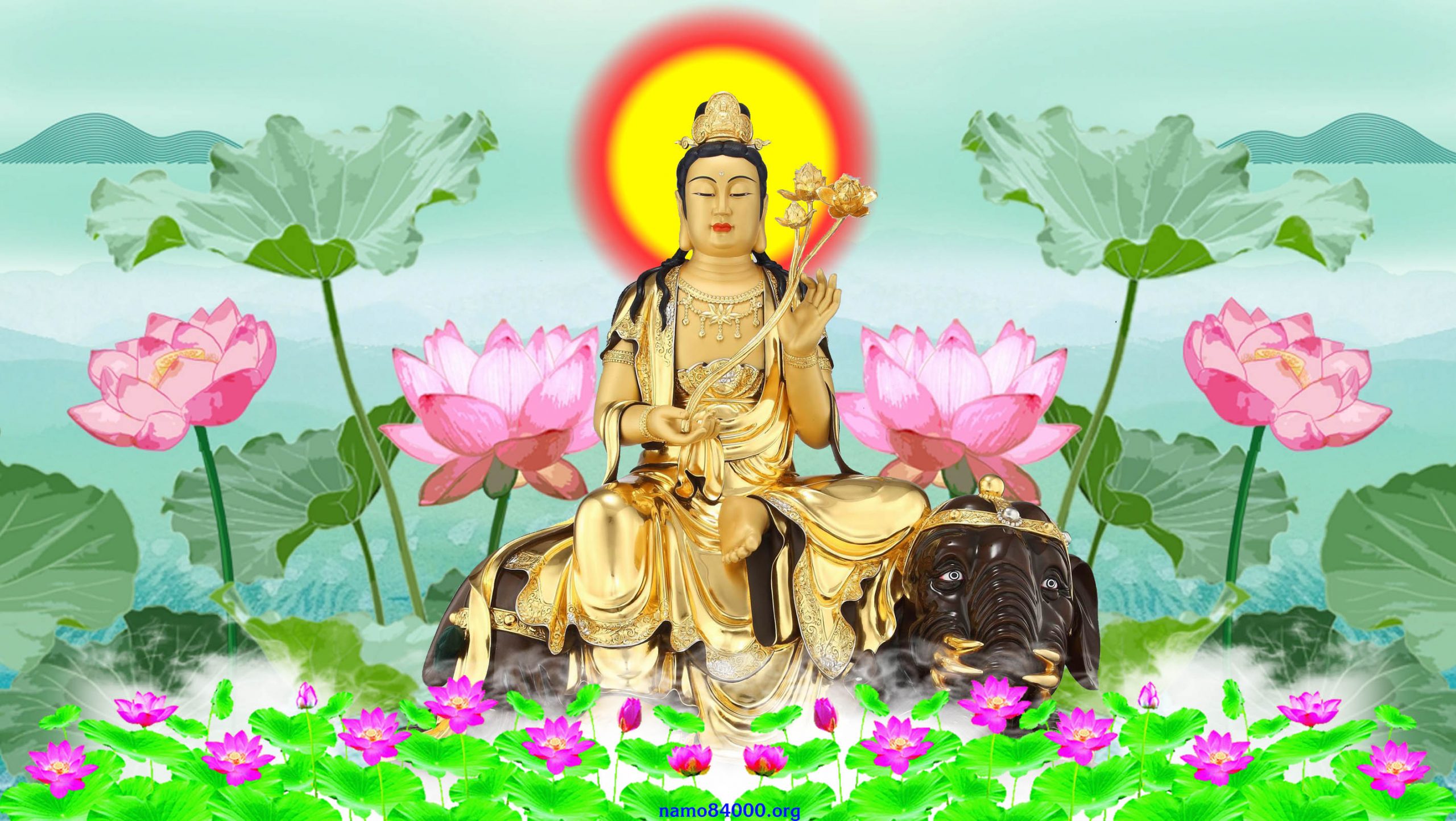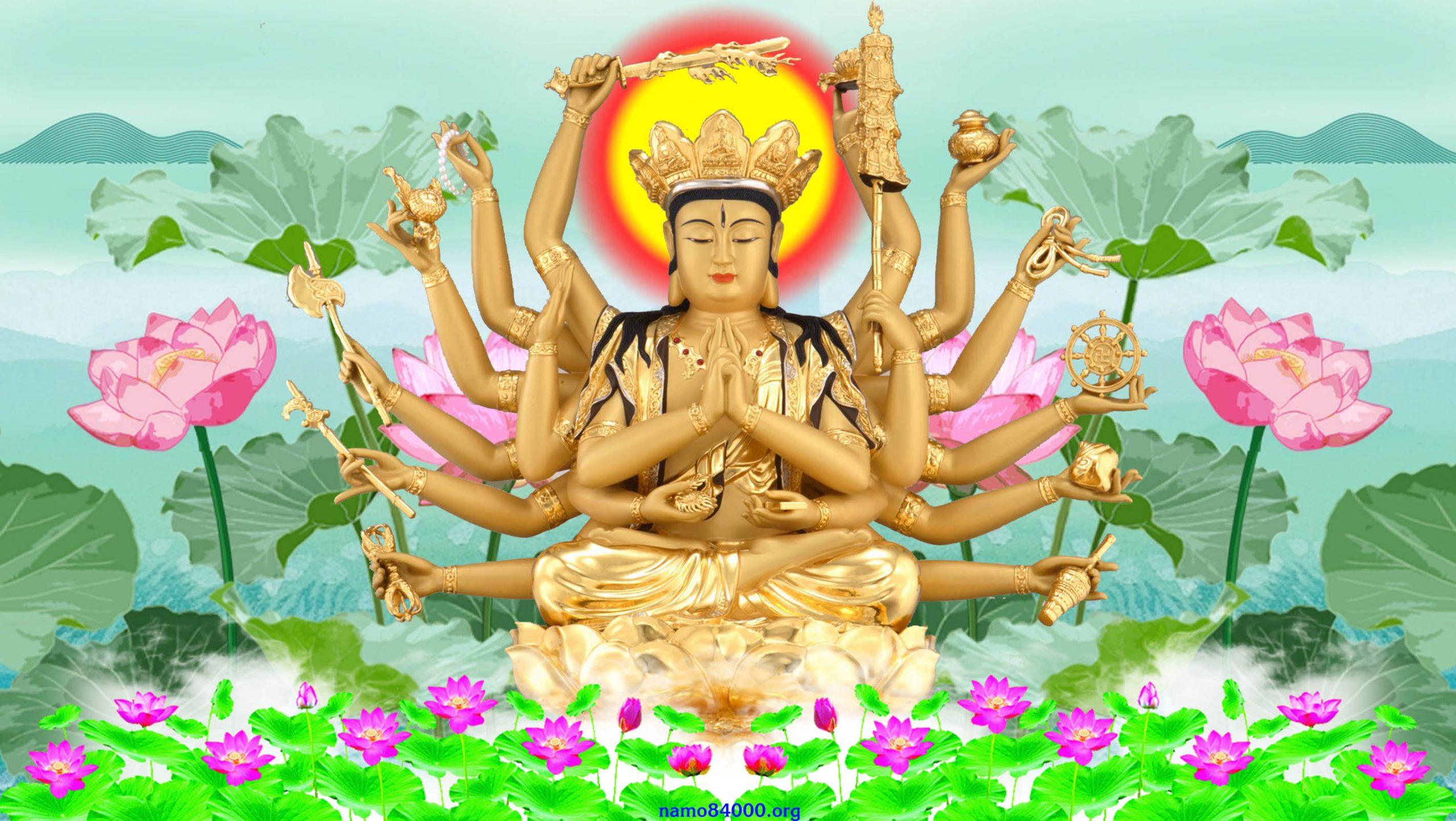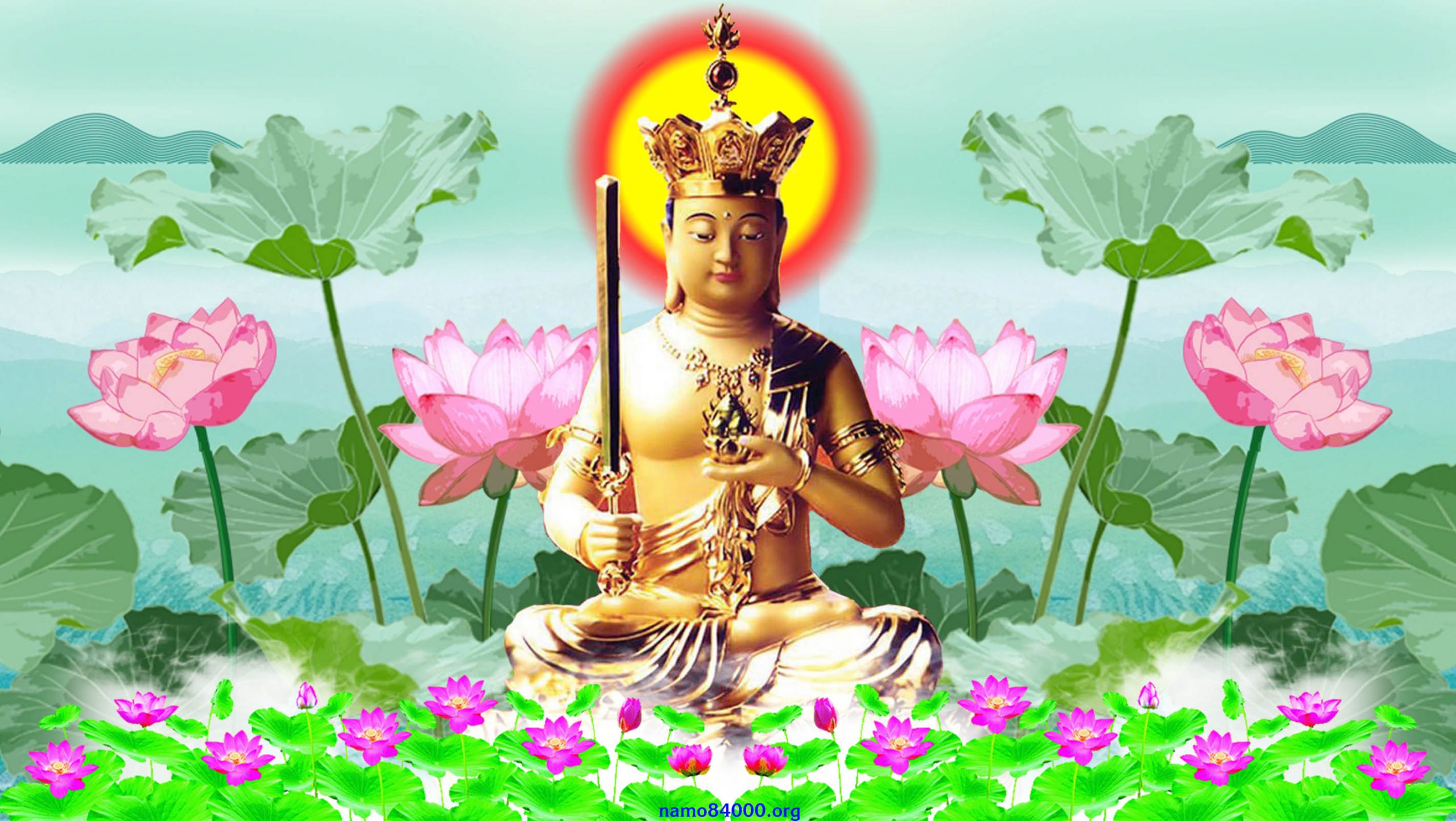Thiên long và các chúng khác trong bát bộ, đã có trong truyền thuyết cổ Ấn Độ; tuy nhiên, thường được dùng trong Kinh điển Phật giáo. Bát bộ chúng hay tám loại chúng gồm chư thiên, hay phi nhân được xem như là những thiên long hộ pháp, hay những vị cùng đến tham dự những buổi pháp hội của Phật. Thiên long không nhìn thấy được bằng mắt thường được; tuy nhiên, thân thể tinh tế của thiên long có thể được nhìn thấy với những người có định lực cao.
Devas, nagas and others of the eight classes—The eight groups of demon followers which existed in ancient Indian legends; however, they were often utilized in Buddhist sutras to suggest the diversity of the Buddha’s audiences. Eight classes of divinities, or eight kinds of gods and demi-gods. These are various classes of non-human beings that are regarded as protectors of Buddhist Dharma and Buddhism as part of the audience attending the Buddha’s sermons. Divinities are not ordinarily visible to human eyes; however, their subtle body can be clearly seen with higher spiritual power.
Thứ nhất là Thiên chúng, tức là chư Thiên trong các cõi trời (sáu cõi trời Dục Giới, bốn trời Tứ Thiền Sắc Giới, Tứ Không Xứ).
First, devas, gods, or angels in the Heavens.
Thứ nhì là Long chúng (Rồng). Rồng được xem như hữu ích, vì mang lại mưa. Như loài rồng tiêu biểu cho loài bò sát mạnh nhất; nó có thể biến hiện, tăng giảm, dài ngắn tùy ý. Nó có thể bay trên trời, lội dưới nước hay đi vào trong đất. Vào mùa xuân nó bay lượn trên trời, mùa đông lại chui vào đất. Loài rồng mặt nguời. Đối với Phật giáo, thì đây là tiêu biểu cho những phàm nhân. Loài rồng hay á thần đầy nhân từ, dấu hiệu của khởi điểm trí tuệ, đặc biệt là ở Ấn Độ. Rồng cũng được xem như là Thiên Long Hộ Pháp. Rồng thường ẩn dưới vực sâu để kiểm soát sông hồ. Long và Đại Long cũng là danh hiệu của những bậc đã thoát vòng sanh tử, vì lực thoát vòng tham dục và trói buộc trần thế của các ngài bay vút như rồng bay lên trời. Bên cạnh đó, Long và Đại Long là danh hiệu của Phật. “Naga” là từ Phạn ngữ chỉ “những chúng sanh giống như loài rắn.” Đây là một loại chúng sanh có thân hình của loài rắn và đầu của loài người, người ta nói chúng thường trú ngụ dưới nước hay trong thành Bhoga-vati. Người ta nói loài này có sức mạnh kỳ diệu và bản chất khác thường. Theo thần thoại Trung Luận, loài này đóng một vai trò quan trọng trong việc truyền thừa giáo lý “Bát Nhã Ba La Mật.” Vì sợ rằng giáo thuyết này có thể bị hiểu lầm nên Đức Phật đã giao giáo điển này cho loài “thiên long” bảo hộ cho đến khi nào một vị nào có khả năng thuyết giảng ra đời. Đó là ngài Long Thọ Bồ Tát, người ta nói ngài đã dùng phép thần thông bay tới long cung để nhận những giáo điển được cất giấu ấy. Câu chuyện rõ ràng cố ý giải thích khoảng trống thời gian giữa lúc Đức Phật nhập diệt và sự xuất hiện của những giáo điển này mà thôi. Người con gái của Long Vương Sa Kiệt La dưới đáy biển; Long Nữ được Đức Phật nói đến trong Kinh Pháp Hoa, dù là nữ và mới có 8 tuổi, nàng đã thành Phật. Thật là khó tin khi một người nữ như con gái của Long Vương trong một khoảnh khắc mà có thể đạt được toàn giác, nhưng Đức Phật đã xác chứng được điều này, và chính Long Nữ đã khai thị giáo lý Đại Thừa giải thoát cho chúng sanh. Bấy giờ chư Bồ Tát, Thanh Văn, chư Thiên, Rồng, người và phi nhân trong thế giới Ta Bà đều trông thấy Long Nữ trở thành một vị Phật và phổ giảng kinh Pháp Hoa cho chư Thiên. Lúc đó chúng hội chứng kiến một nữ nhân giảng pháp và thành Phật thì đều tỉnh ngộ và đạt đến trạng thái bất thối chuyển, và tất cả đều được thọ ký sẽ thành Phật.
Second, dragons or heavenly dragons. Dragons are regarded as beneficent, bringing the rains. As dragon it represents the chief of the scaly reptiles; it can disappear or manifest, increase or decrease, lengthen or shrink at will. It can mount in the sky and in water, and enter the earth. In spring it mounts in the sky and in winter enters the earth. Dragon or a beneficent half-divine being (serpent or serpent demon). They supposed to have a human face with serpent-like lower extremities. With Buddhism, they are also represented as ordinary men. Snakes and Dragons are symbols of initiates of the wisdom, especially in India the Nagas or Serpent Kings are symbols of initiates of the Wisdom. Dragons are also guarding the heavens. Dragơns control rivers and lakes, and hibernate in the deep. Naga and Mahanaga are titles of those freed from reincarnation, because of his powers, or because like the dragon he soared above earthly desires and ties. Besides, Naga and Mahagana are titles of a Buddha. “Naga” is a Sanskrit term for “Serpent-like beings.” A kind of being with bodies of snakes and human heads, said to inhabit in the waters or the city of Bhoga-vati under the waters. They are said to be endowed with miraculous powers and to have capricious natures. According to Madhyamaka mythology, they played a key role in the transmission of the “Perfection of Wisdom” (Prajna-Paramita) texts. Fearing that they would be misunderstood, the Buddha reportedly gave the texts to the nagas for safekeeping until the birth of someone who was able to interpret them correctly. This was Nagarjuna (150-250), who is said to have magically flown to the nagas city and received the hidden books. The story is apparently intended to explain only the chronological discrepancy between the death of the Buddha and the appearance of these texts. A naga maiden, daughter of sagar-nagaraja, the dragon king at the bottom of the ocean; she is presented in the Lotus sutra, though a female and only eight years old, as instantly becoming a Buddha, under the tuition of Manjusri. It is incredible that a girl as the daughter of the Dragon King should become perfectly enlightened in a moment, but the Buddha already certified that, and she already revealed the teaching of the Great Vehicle to deliver creatures from suffering. At that time, the saha world of Bodhisattvas, Sravakas, Pratyeka-buddhas, gods, and human and non-human beings, beholding the dragon’s daughter become a Buddha and universally preach the Law to the gods. On witnessing her preach the Law and become a Buddha, the whole assembly were aroused to realization and attain the stage of “never sliding back into mortality,” and they also received their prediction of attainment of Buddhahood.
Thứ ba là Dạ Xoa chúng. Đây là loài quỷ bay cực nhanh, giữ các cửa trời, có liên hệ tới trời Đâu Suất, nhưng thường thấy nơi cõi người. Đây cũng là một loại chúng sanh sống dưới đất, trong không gian, trên lưng chừng trời, hay trong rừng. Chúng được phú cho những lực siêu nhiên, có khi có lợi, nhưng nhiều khi ác độc và bạo động. Trong Phật giáo, Dạ Xoa là những chúng sanh có khả năng siêu nhân, thường là bất bạo động, tốt và hay được nhắc tới trong kinh điển Phật giáo. Người ta nói loài dạ xoa thường hay có mặt trong các buổi thuyết giảng Phật pháp. Đây là một loài quỷ nhanh nhẹn và có khả năng làm hại con người, nhưng trong vài trường hợp Dạ Xoa là những chúng sanh hộ pháp hay là người giữ cửa Trời. Một số người định nghĩa Dạ Xoa như là những vị thần có sức mạnh vô song, hay là loài phi nhơn có vị trí giữa con người và Càn Thác Bà. Trong vài trường hợp, Dạ xoa, chủ yếu là loài quỷ cái, là những con quỷ dữ hay lởn vởn ở các nơi hẻo lánh, thù địch với những ai sùng đạo, chúng là loài ăn thịt người. Chúng thường phá rối chùa chiềng hay thiền định của chư Tăng ni bằng những tiếng la hét ồn ào. Lại có những loài Dạ xoa là những loài quỷ dũng mãnh, bay đi rất nhanh lẹ, và có phận sự canh giữ các cửa Trời.
Third, Yaksas, extremely fast demons that guard Heaven’s Gates, sometimes associated with the Tusita Heaven, but usually located on the human plane (realm). This is a class of beings who live in the earth, air, lower heavens, and forests. They are endowed with supernatural powers and are sometimes beneficent, but sometimes malignant and violent. In Buddhism, yaksas are supernatural beings, usually good without violent (divine in nature and possess supernatural powers), frequently mentioned in Buddhist sutras. They are often said to be present at the preaching of Buddhist sutras. This is a swift (extremely fast), powerful kind of ghost or demon, which is usually harmful, but in some cases acts as a protector of the Dharma or guardians of Heaven’s gates. Some defines Yaksa as a divine being of great power, or non-human who ranks between man and Gandharva (gandhabba). In some cases, other yaksas, mainly the females, called yaksini, are wild demonic beings who live in solitary places and are hostile toward people, particularly those who lead a spiritual life, devourers of human flesh. They often disturb the quietness in the temple and the meditation of monks and nuns by making loud noise. There are also some extremely fast demons who guard Heaven’s Gates.
Thứ tư là Càn Thát Bà chúng. Đây là loại thần âm nhạc nơi cõi trời Đế Thích. Càn thát bà còn gọi là Càn Đạp Bà, Càn Đạp Hòa, Kiện Đà La, Kiện Đạt Bà, Kiện Đạt Phược, và Ngạn Đạt Phược, dịch là Hương Âm, Hương Thần, Tầm Hương Hành hay Xú Hương, một vị thần biết những bí mật trên trời và chân lý thần thánh và để lộ những điều đó cho con người. Càn thát bà là những á thần hay những nhạc công vũ công trong các bữa tiệc trời. Càn thát bà thường săn đuổi đàn bà và có khát vọng làm tình với họ. Càn thát bà cũng được coi như là những sinh vật xấu ác đáng sợ. Gọi là Hương Âm vì Càn Thát Bà không ăn thịt uống rượu, chỉ tìm mùi thơm để hấp thụ, và cũng tỏa ra mùi thơm. Là vị Thần lo về âm nhạc cho vua trời Đế Thích, cũng giống như Khẩn Na La lo về pháp nhạc. Càn thát bà sống trong vùng thiên không và thiên thủy, và đặc biệt quan hệ với cõi trời Tứ Thiên Vương.
Fourth, Gandharvas, musician Angels for the Cakra Heaven Kings. “Fragrance-devouring celestial musicians.” The celestial gandharva is a deity who knows and reveals the secrets of the celestial and divine truth. Demigods who are also heavenly singers and musicians who took part in the orchestra at the banquets of the gods. They follow after women and are desirous of intercourse with them; they are also feared as evil beings. Gandharva or Gandharva Kayikas, spirits on Gandha-mandala (the fragrant or inscent mountains), so called because the Gandharvas do not drink wine or eat meat, but feed on inscense or fragrance and give off fragrant odours. As musicians of Indra, or in the retinue of Dhrtarastra, they are said to be the same as, or similar to, the Kinnaras. They are Dhrtarastra, associated with soma, the moon, and with medicine. They cause ecstasy, are erotic, and the patrons of marriageable girls; the Apsaras are their wives, and both are patrons of dicers. They live in the region of the air and the heavenly waters and are especially associated with the Caturmaharajika realm.
Thứ năm là A Tu La chúng, những thần chiến đấu thường ở núi và đáy biển quanh những triền bọc quanh núi Tu Di, bên dưới cõi trời Tứ Thiên Vương.
Fifth, asuras, war gods, or evil spirits which live on the slopes of Mount Meru, below the lowest heavenly sphere, that of the four Guardian Kings.
Thứ sáu là Ca Lâu La chúng. “Garudas” là thuật ngữ Bắc Phạn chỉ “Ca lâu ca,” hay “Thần điểu,” loại ăn thịt rồng. Hình loại chim trong thần thoại có đầu người, hai cánh xòe ra cách nhau đến 3.360.000 dậm, kẻ thù của các loại rồng (chim ăn thịt rồng), xe cỡi của Thần Tỳ Thấp Nô. Đây là vua của loài chim Kim Xí (Loài chim thù thắng nhất trong các loài chim Kim Xí), bạn đồng hành của thần Visnu. Kim Xí Điểu Vương còn được dùng để ví với các bậc đại nhân, trong khi tiểu nhân được ví với loài quạ. Trong Phật giáo, Kim Xí Điểu Vương còn để chỉ Đức Phật.
The sixth class of divinities is Garudas. “Garudas” is a Sanskrit term for “Devourer,” or “king of bird,” figures of mythical birds with human heads, heavenly birds with great golden wing spans of approximately 3,360,000 miles, the traditional enemies of Nagas. Dragon-devouring bird, the vehicle of Vishnu (this is a golden winged bird, the vehicles of Visnu, lords of the winged race and natural enemies of Nagas). This is the king of birds, with golden wings, companion of Visnu. Garuda-raja or king of birds are used to compare with the great people, while the crow are used to compare with the wicked people. In Buddhism, the king of birds is a symbol of the Buddha.
Thứ bảy là Khẩn Na La chúng. Loại chúng sanh nửa giống người nửa giống thần, có tài trổi nhạc. Một chúng sanh giống như con người, có dáng vẻ như người nhưng lại có các bộ phận trong cơ thể của loài thú, một nhạc sĩ huyền thoại của cõi trời, có đầu ngựa với một sừng, và thân hình giống như hình người. Con nam thì ca còn con nữ thì múa. Còn gọi là “Ca Thần” có sừng, với những ống sáo thủy tinh trong suốt. Ca Thần Nữ thường vừa ca vừa múa. Những Ca Thần nầy được xếp dưới hạng Càn Thát Bà. Khẩn na la là loại chúng sanh (chúng sanh cõi trời) nửa ngựa nửa người, hoặc mình người đầu ngựa, hoặc mình ngựa đầu người. Còn gọi là “Ca Thần” có sừng, với những ống sáo thủy tinh trong suốt. Ca Thần Nữ thường vừa ca vừa múa. Những Ca Thần nầy được xếp dưới hạng Càn Thát Bà.
The seventh class of divinities is Kinnaras, heavenly beings with human bodies and animal heads (half-horse, half-men). A being resembling but not a human being. A being having the appearance of humans but possessing parts of animals. A kind of mythical celestial musician. It has a horse-like head with one horn, and a body like that of human. The males sing and the females dance. They are described as “men yet not men.” They are one of the eight classes of heavenly musicians; they are also described as horned, as having crystal lutes, the females singing and dancing, and as ranking below gandharvas. Kinnaras are mythical beings (heavenly beings), or musicians of Kuvera, with a human figure and the head of a horse or with a horse’s body and the head of a man. They are described as “men yet not men.” They are one of the eight classes of heavenly musicians; they are also described as horned, as having crystal lutes, the females singing and dancing, and as ranking below gandharvas.
Thứ tám là Ma Hầu La Già chúng. Ma-Hầu-La Già, một trong tám chúng sanh siêu nhân trong Kinh Liên Hoa. Thần mãng xà (rắn lớn) có thân dài trên 100 dậm. Đây là một loại quỷ có hình rắn trong Phật giáo. Ma Hầu La Già được phác họa là những chúng sanh bụng lớn, có hình dáng như loài rắn lớn, người ta nói đó là những thần đất. Ma Hầu La Già được nói đến như là thính chúng trong các kinh điển Đại Thừa.
The eighth class of divinities is Mahoraga, one of the eight classes of supernatural beings in the Lotus Sutra or eight Vajra Deities. Serpent or Snake gods with body length over 100 miles. This is a class of demons in Buddhism shaped like a boa or great snake. Mahoragas are depicted to be large-bellied creatures shaped like boas who are said to be lords of the soil. They are mentioned among the audience of a number of Mahayana sutras.

